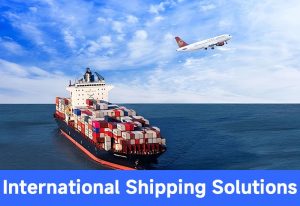Shipping goods internationally, especially to destinations like Australia, can be a complex process with numerous regulations and compliance requirements. When it comes to sensitive cargo, the stakes are even higher, demanding a thorough understanding of the factors that distinguish it from regular shipments. In this blog post, we’ll explore the key differences between shipping sensitive and regular cargo to Australia, along with essential precautions to ensure a smooth and compliant process.

Differences Between Sensitive and Regular Cargo
- Regulatory Scrutiny: The key distinction between the two lies in the level of scrutiny each type of cargo undergoes. Regular cargo typically faces standard customs checks, while sensitive cargo receives heightened attention due to its potential impact on health, safety, or the environment. This includes items like cosmetics, food, and pharmaceuticals, which require special permits, certifications, and additional documentation.
- Packaging Requirements: Sensitive cargo often requires specialized packaging to ensure safety and compliance with transport regulations. This may include temperature-controlled containers for perishables, leak-proof packaging for liquids, or shock-resistant enclosures for fragile items. In contrast, regular cargo typically follows more general packaging standards.
- Transport Modes: Both types of cargo can be shipped by air, sea, or land, but sensitive cargo may be limited to certain modes due to safety regulations. For example, some chemicals or flammable materials may be restricted from air transport. Additionally, sea transport often involves longer transit times, which requires extra precautions for perishable items.
- Cost and Timing: Sensitive cargo often incurs higher shipping costs and longer lead times due to additional inspection and handling requirements. In contrast, regular cargo is typically more cost-effective to ship and can be delivered more quickly.
Precautions for Shipping Sensitive Cargo to Australia
- Thorough Research: Familiarize yourself with Australia’s import regulations and restrictions for your specific type of sensitive cargo. This includes understanding any licensing, labeling, or testing requirements that may apply.
- Expert Consultation: Partner with a reputable freight forwarder or customs broker who specializes in shipping sensitive cargo to Australia. Their expertise will help guide you through the process, ensuring compliance and minimizing delays.
- Accurate Documentation: Ensure that your documentation is thorough and accurately describes the cargo, including its nature, quantity, and intended use. Incomplete or incorrect documentation can result in delays, fines, or even confiscation.
- Special Packaging: Invest in specialized packaging that meets the unique requirements of your sensitive cargo. This includes ensuring it’s adequately protected against damage, temperature fluctuations, or leakage.
- Insurance Coverage: Consider securing additional insurance coverage for your sensitive cargo to mitigate financial risks associated with loss, damage, or delays during transit.
Conclusion
Shipping sensitive cargo to Australia requires heightened scrutiny, specialized packaging, and strict adherence to regulations. By understanding the key differences between sensitive and regular cargo and taking the necessary precautions, shippers can ensure their goods arrive safely and in compliance with Australian requirements. Partnering with experienced logistics providers is essential for navigating the complexities of international shipping, especially when handling sensitive cargo.



